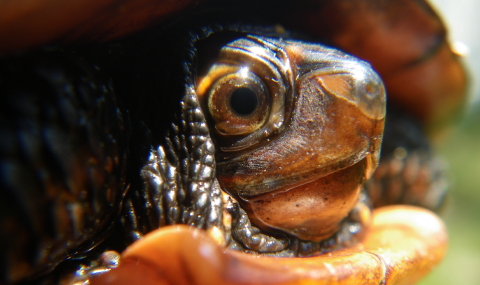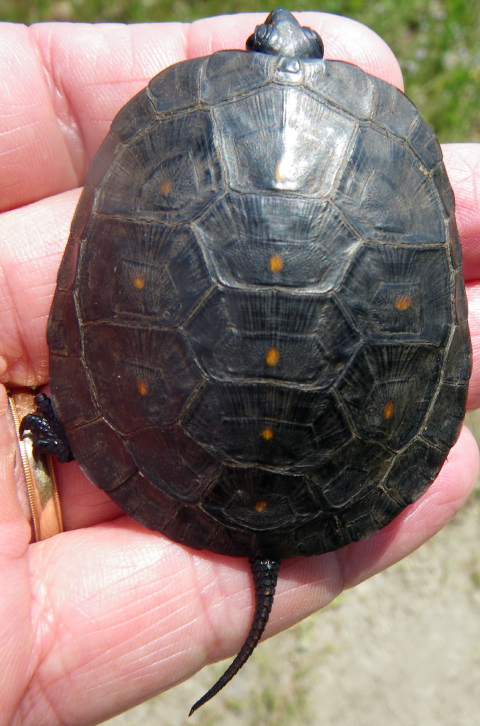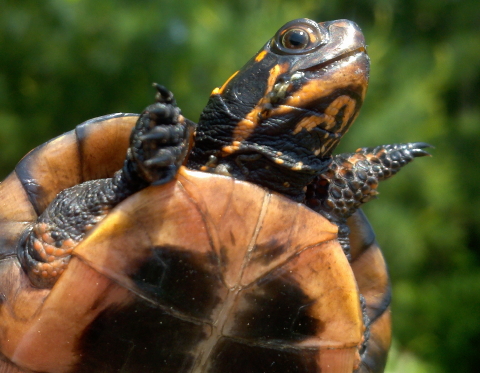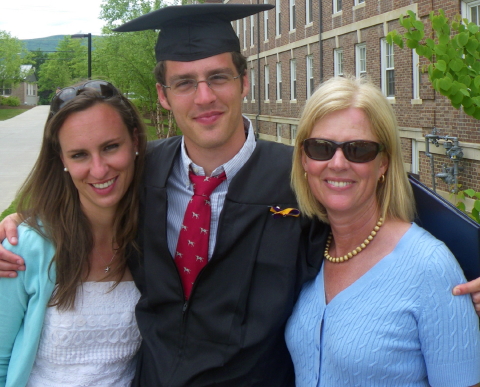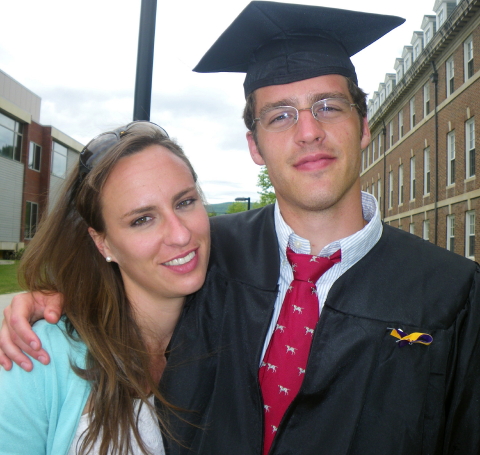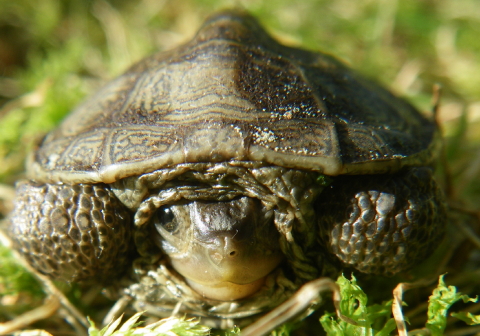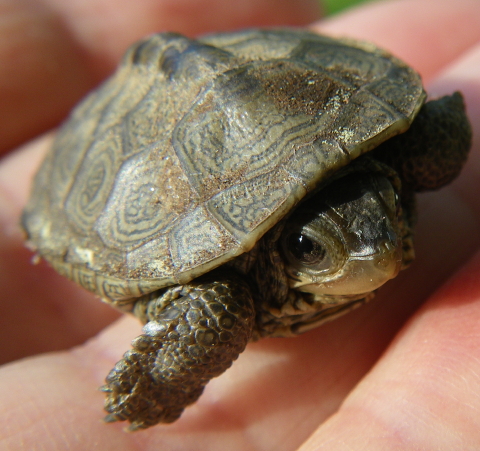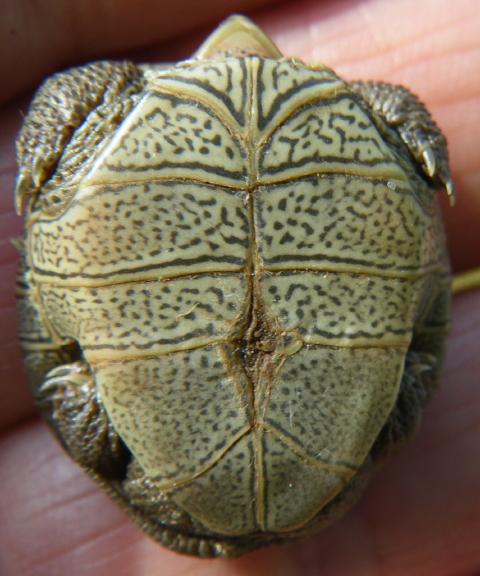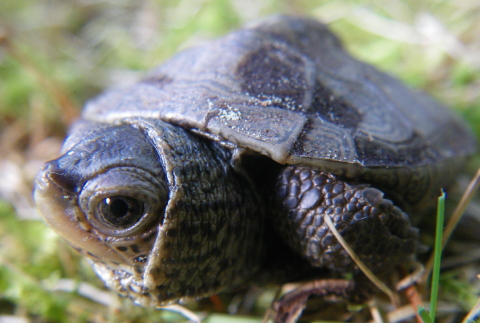One-Year-Old Female Spotted Turtle (Clemmys guttata)
Turtle Journal visited the abandoned Goldwitz cranberry bog in Marion yesterday morning to check for signs of turtle nesting. As Don Lewis patrolled a shallow channel, which had been largely drained by operations in an adjacent active bog, he spotted a tiny spotted turtle trying to soak in the last puddle of ooze. So little moisture remained in the channel that the turtle was unable to disappear into the bottom before Don was able to scoop her up with a hand capture. Normally, she would have disappeared under murky water and into the soft bottom before we got within eyeshot of her.
Spotted Turtle Carapace: Single Growth Line
Examining this beautiful little turtle, we find only a single growth line in each scute, indicating that she is entering her second year of life.
Sexual Dichromatism: Female Spotted Turtle
It took a while before this shy juvenile dared to show her head. Once she did, it was easy to identify her gender as female with her brightly colored neck. Males have drably hued throats.
One-Year-Old Female Spotted Turtle
So few spotted turtles remain in Goldwitz bog that we rarely see more than a couple of adults during the entire mating season. When we began observing this bog channel seven years ago, nearly a dozen adults would be seen in the spring mating aggregation. So, it’s a real pleasure with such reduced numbers to find a new recruit in this distressed population.
